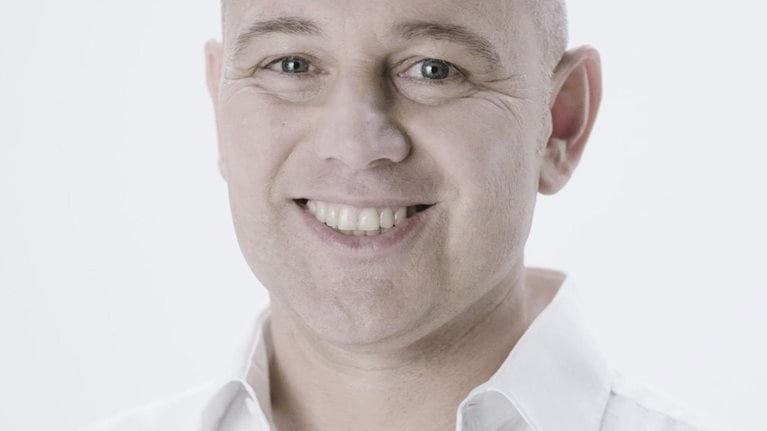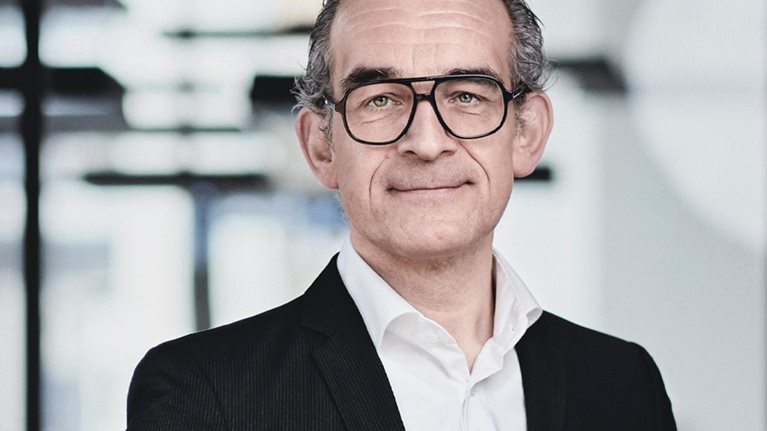For many banks in Europe and Latin America, insurance is now “the need” to expand relationships with customers. Over the past few years, many bancassurance partnerships have successfully developed their positioning, reputations, and customer bases. Insurance fee income has gained relevance in light of a continued low-interest environment and, more recently, the outbreak of COVID-19, which heightened stress on credit products, such as consumer loans.
Our interview with industry leaders from BBVA and Crédit Agricole Assurances reinforces evidence of certain themes that are expected to shape the industry:
- Nonlife insurance and stand-alone sales are gaining relevance with banks, aiming to capture a broad share of customers’ wallets.
- New services are steadily being deployed to differentiate solutions for customers and to raise customer engagement.
- Banks are increasingly customizing insurance propositions to individual needs through the targeted use of public and banking data.
- Digital marketing and analytics tools are enabling a more scientific sales approach. Such an approach employs effective, personalized, data-driven leads across all channels, including the branch network and digital and remote channels, and allows banks to reach the “right” customers at the “right” moments with the “right” offers.
- Claims processes will increasingly leverage digital technologies to provide the best possible customer service, and technical excellence in the portfolio will indicate enhanced retention and pricing, with the latter becoming increasingly transparent in the digital shift.
- Operating models between bank and insurer need to adapt to a fast-changing environment that requires more frequent interactions and seamless coordination in an omnichannel approach. Partners are also accelerating the pace or facilitating innovation, including by offering seamless access to service providers directly through the banking channel.
These changes will not only challenge how banks and insurers integrate and work with one another on a bilateral basis but will also define the role they play in the larger picture as new direct and platform models likely emerge.
The following text is an edited transcript of McKinsey’s Bancassurance Forum 2021 Fireside Chats, which was held remotely in January 2021.
McKinsey: What’s your perspective on the current bancassurance environment?
Guillaume Oreckin: In the past five years, we saw rising interest in developing nonlife insurance, which can bring value to the franchise in addition to the financial domain. We believe there is no reason why the banking customer should get their insurance from somewhere else. This is a radical change. Previously, the idea was to define a penetration rate, and now the ambition is to move from one-off sales to capturing the full share of wallet and to say, “How can we show to every customer who is already banking with us that we are also the right partner to address their insurance needs?”
As far as life insurance is concerned, the trend is different. Recently, there has been a certain reluctance toward guaranteed savings products, for example, as well as a refocusing on portfolio quality instead of volumes. A lot of investment in our banking partners has been to help raise awareness among their customers that guaranteed savings is not the only way to save for the future. For example, customers are shown simulations to demonstrate how they could additionally benefit by using unit-linked solutions rather than guaranteed savings products. We want to democratize the access to wealth-management services, bringing enabling tools to our advisers and to regular customers—not only to affluent or private banking customers.
Jorge Matuk Chijner: I agree with Guillaume on the dynamics between life and nonlife and the approach for value creation. In the current situation, we see an opportunity to accelerate change. Customers are clearly more active in digital channels, for research and contracting as well as for servicing. A recent survey shows that customers’ preference for digital sales in insurance increased from 38 percent before the pandemic to 44 percent after its onset.1 In this environment, BBVA—and the industry in general—had to develop additional tools to meet these expectations. As part of our innovation efforts, we created an entirely new solution: a personal finance and expense-tracking application called Bconomy. This application allows customers to analyze all their expenditure data from different sources, such as credit cards or direct debits, as well as spending on insurance. Currently, all our 37 million digital customers have access to this solution. In this context, we determined that the key processes to enhance were not only for digital sales but also for other activities along the value chain, such as servicing, product modularization, and data usage.
McKinsey: How do you both see your ambitions and priorities evolving as we enter the next normal?
Guillaume Oreckin: Digital channels and the ability to distribute without the presence of the customer are becoming key. We have invested a lot in leveraging banking and insurance data to find patterns either for pricing or for commercial purposes. The data we hold are a key asset. As we increasingly diversify our business into nonlife, we believe that—apart from the insurance coverage—the services we can bring to our customers are also important. The role of banks is shifting toward value-added services and expanding from purely financial needs, focusing on addressing customers’ daily-life needs. Insurance is the entry point into the business of providing additional services to customers.
Today, we offer a lot of services at the moment of the claim—but tomorrow, we believe we can extend this to global service offerings along the customer life cycle. For example, in our branches in France, we sell home-surveillance cameras that are connected to a call center. The idea is to convey the message that we protect, we insure, and, if there is a problem, we will handle the claims. Furthermore, in the claims area, we are focused on providing services rather than merely writing checks. As an example, we created our own network of repairers for home insurance.
Jorge Matuk Chijner: We see a lot of changes in the market and in customer behaviors in terms of product preferences. Customers are showing greater sensitivity to health and life insurance, employment, and emerging risks such as cybersecurity. All these needs are emphasized by the pandemic, as well as other factors such as sustainability and climate change. We also see that the borders between life and nonlife businesses are becoming increasingly blurred, which represents an opportunity for BBVA to strengthen our value proposition.
In this space, we’ve seen interesting phenomena. In terms of the customer profile, there is an increasing propensity for younger people to buy insurance. There is also the expectation that customers will receive consistent experiences when they visit branches or use other channels—a true omnichannel approach. This means that customers can do things entirely on their own or via a contact center, but they can also start a journey in one channel and continue it in another. Our remote assistance app, Blue, helps in this respect, as it can provide a more specialized experience than a call center. We also offer video capabilities in Mexico to connect with customers.
In terms of data, banks have wide access, some of which can be transformed into insights for insurance companies, but we need new capabilities to do this. We recently introduced a new pricing model in Turkey based on banking data with the aim of creating specific pricing for clients who want auto insurance. We combine the banking and transactional data of customers and factor those numbers into a highly specific risk assessment. This is the value we can offer both customers and banks.
McKinsey: Both of you have mentioned the relevance of the digital shift. Guillaume, how is Crédit Agricole positioning its distribution channels to be successful?
Guillaume Oreckin: We are working on several aspects to face this challenge. First, products. We already had the idea that products in the bancassurance landscape should be very simple, but this is even more true in the digital space. The personalization aspect is not only in the price but also in the way we approach customers. A complex product is adapted neither to the branch nor to the digital channel. With this in mind, we moved to simple, prepackaged offers that can cover most of the cases but do not require a lot of explanations. We also reduced the number of questions asked to the customer materially. We can sometimes get the same information by using publicly available data or can use public data to predict responses to prefill a form. This also depends on the country, of course. France is quite advanced with regard to publicly published data.
Next, we are also working on the digital-acquisition side of the business, which has been quite tricky. We need to be fully aligned with the bank. We also need to define the right strategy to generate digital leads at sustainable acquisition costs. We are strengthening our teams to create joint business units with our banking partners that are dedicated to traffic generation and channel conversion. Operating separately doesn’t work—and it can even result in internal overbidding for the sole benefit of search engines. Customers also expect a lot regarding the services we can provide on the claims side. Most customers still expect human contact when making claims, but we also see a growing share of the population that prefers self-care. We need to invest a lot in that area.
McKinsey: Jorge, BBVA was one of the earliest players to recognize the significance of the digital shift. How do you foresee the insurance business repositioning to take advantage of the subsequent changes to the distribution model?
Jorge Matuk Chijner: We identified the fact that there is no trade-off between branches and digital growth. Our branches are advice centers for our customers. Customers buy insurance either through digital channels or physical branches but doing so at the branch enables us to provide a more qualified sales team to help them. The digital channel is not an enemy of the branches. There are complementary solutions for both sides: we share quotes with the branches and the digital channels, increase our accessible customer base, and have more satisfied customers. For example, customers who start the journey online can later be contacted by phone—or vice versa. This allows the bank to follow up on leads using both offline and digital tools.
We are addressing this topic across our important partnership agreements. In Spain, we partnered with Allianz for nonlife and Bupa for health. We also have partnerships with Vitality in Mexico and Rimac in Peru. The products are similar in terms of suitability for digital channels and branches, but we have different approaches depending on customer preference. For example, we are working on contextual insurance in Spain—particularly travel insurance—which had a nearly double-digit conversion rate before the pandemic (such as when a ticket for a flight is purchased on a credit card or a customer orders foreign exchange). The branches can always advise customers on traditional products. However, as we create new products, digital channels become increasingly important support to complement the branches.
Would you like to learn more about our Financial Services Practice?
In terms of partnerships, we work with Bupa in Spain on telemedicine and on health prevention—for example, by adding some features directly to our app and by providing a seamless transition into Bupa’s app without the need for the customer to log in again. In Mexico, we work with Vitality on life insurance, particularly when customers change life stages or adjust their types of insurance. Part of this is knowing our customer base and recognizing the opportunity to grow—for instance, working with Telefonica in Spain and leveraging our mobile app in Xiaomi mobile phones.
McKinsey: Continuing with this topic of change, what elements of innovation around product offerings are you observing, and will those be important in your strategies moving forward?
Guillaume Oreckin: I strongly believe that innovation will be in the services we can offer customers. That’s why we created a joint venture with Europ Assistance. We did not have our own assistance arm, and strategically, we thought that was a mistake. Many innovations from the past ten or 15 years came through assistance and services, either because we extended their use or because new services became necessary.
If you take, for example, auto or home insurance, it is not so easy to differentiate the offering from competitors; it has not changed much. Where you can make the difference is in the services you provide and in the way you handle claims. One element is also in the way you support the banks: the tools you give to the bank networks, either in the digital, call-center, or physical channel. We have invested a lot in giving our banking partners the best possible tools to approach customers’ needs and give the right advice at the right moment.
Jorge Matuk Chijner: We are strong believers in continuous innovation. We are always seeking to define what is important in terms of knowledge all along the value chain, including claims handling, policy servicing, and data management. In our case, we have focused our innovation efforts on claims, which is the moment of truth in insurance. Good operators can help banks save money in addition to ensuring the best possible customer experience.
We recently partnered with Bdeo, a start-up in Mexico that provides technology for remote claims verification in our auto insurance products. We’re also working closely with Allianz’s corporate venture capital fund to spur innovation and enable access to a larger insurance ecosystem. Finally, we’re working with Bupa on medical expenses. All that said, innovation is a trial-and-error process, often spanning multiple countries. You need to choose where the priorities are. In our case, it was claims.
McKinsey: Finally, Guillaume, what is your perspective on the threat of direct players to bancassurance?
Guillaume Oreckin: Banks can bring the best of both worlds, and direct is not an unknown attacker to us. We already sell a lot of insurance through bank websites, which are among those that have the strongest traffic. This is a strong advantage for us. The value of the brand also makes me optimistic. At one time, we thought the brand would lose value on the internet because many new brands would appear. That has not been the case. If anything, a strongly established brand is still an incredibly important asset, and it is much easier to build on the value of a brand such as BBVA or Crédit Agricole than to have a brand that is not as well established. Many people will try to enter the direct market, but few will succeed in establishing a strong brand.
Comments and opinions expressed by interviewees are their own and do not represent or reflect the opinions, policies, or positions of McKinsey & Company or have its endorsement.


